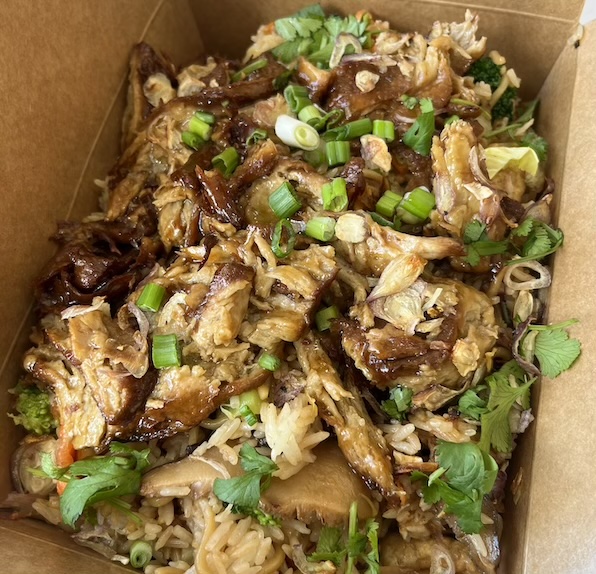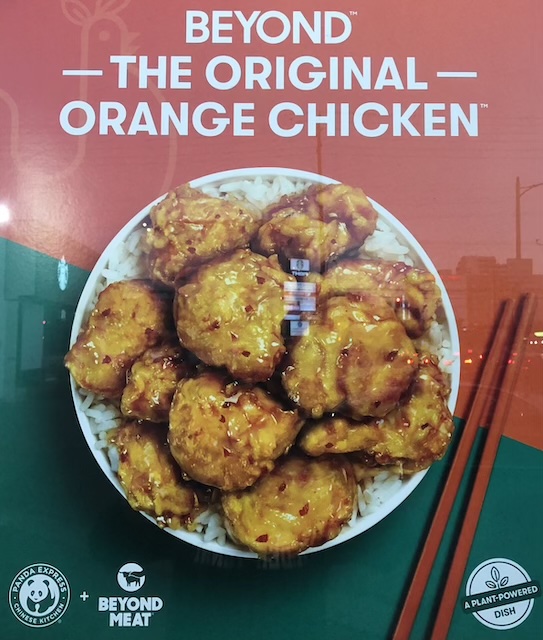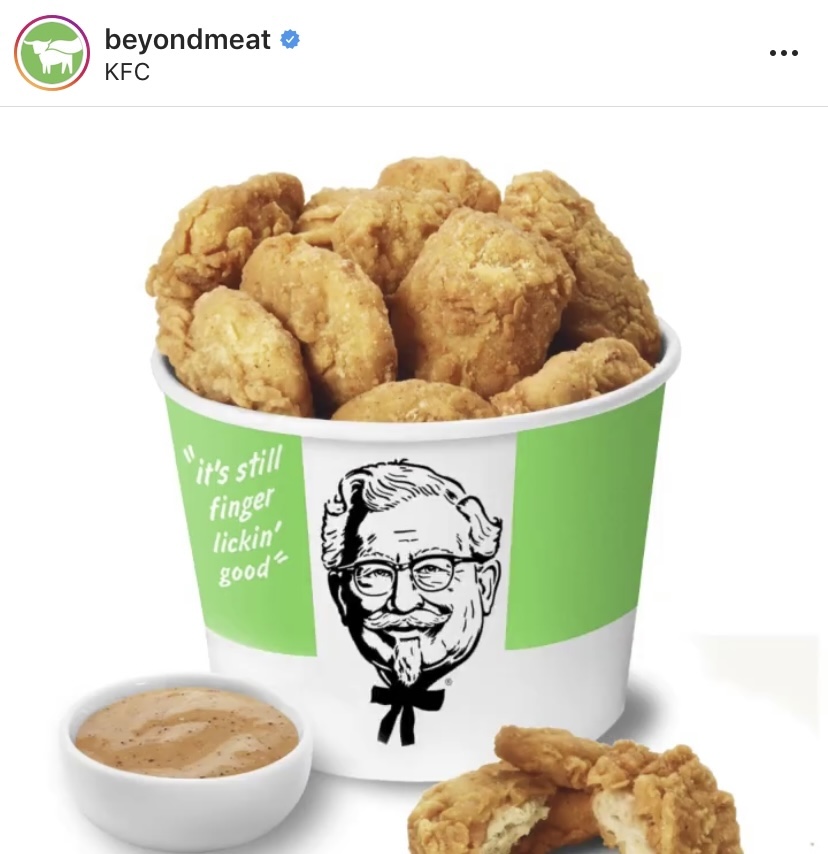The Ancient Chinese Roots of Imitation Meats
By Romen Basu Borsellino | 03 Aug, 2025
Plant-based meat substitutes have experienced both a surge and decline in US markets over the past decade. But anyone looking to call this a fad might take a quick look back…about 2,000 years.
At nearly every point during my childhood our kitchen pantry contained some sort of canned imitation meat product in an Asian language that I couldn’t understand.
My older brother had declared that he was a vegetarian at age 11. It was a moral choice made for animal welfare, which is to say that while he didn’t eat meat, he still loved the taste of it.
In the 90s you could find Tofurkey, Boca, and maybe Morning Star imitation meat brands at a number of grocery stores but those were about the only options that could satisfy his meat cravings.
That is, unless we went to an Asian grocery store. For my brother, an outing to Wang’s Market was not unlike a trip to Disneyland.
Mock duck. Fake goose. Imitation beef jerky. It felt like Asians were decades ahead of everyone else when it came to their selection of fake meats.
It turns out that they were actually centuries ahead.

The Dawn of Imitation Meat
Let’s start by getting our terminology straight. While “plant-based” meats could technically refer to anything that’s vegan, the term generally describes a food product that’s meant to mimic the look and taste of meat from animals. Like beef, pork, chicken.
That’s a little different from a vegan alternative, more broadly, which is really any kind of non-animal protein. Companies like Morning Star and Boca, which have been in this game for a few decades, offer plant-based burgers that are targeted specially towards those who crave the taste of meat. But they also make black bean and garden burgers which are meant to appeal more to those who like the taste of veggies. As history has shown, there tends to be a market for each.
The first real veggie alternative to meat, which came on the scene centuries ago, was tofu. Made from soy, tofu was a creation of the Chinese during the Han Dynasty, which ran from 206 BC to 220 AD. Tofu later spread to Japan, Vietnam and other parts of Southeast Asia. It’s probably no coincidence that the rise of tofu coincided with the popularity of Buddhism, which began to take off during the Han Dynasty.
Per the organization Asia Society, “Buddhism, a cultural system of beliefs and practices based on principles of compassion and non-attachment, originated in the sixth century BCE in what is today Nepal. It was brought to China by Buddhist monks from India during the latter part of the Han dynasty” around 160 AD.
Buddhist monks, particularly in East Asian countries like China, Taiwan, Korea, and Vietnam did not eat meat from animals out of adherence to the principle of “ahimsa,” a reverence for all life.
And while it is generally understood that the monks didn’t know the taste of meat from animals and therefore didn’t crave it, they did need to constantly entertain visitors at their monasteries who did.
And so came the creation of plant-based meat.

First Generation
The monks would create the first-known forms of fake meat, or as some would say, “first generation” meat substitutes. They’d replicate meat or fish for their visitors using wheat gluten, also known as seitan, as well as vegetables and tofu.
As Asian food scholar Fuschia Dunlop explained to Vice UK in 2019, “A lot of these people would have been normally eating meat but they would eat vegetarian food when they went to a monastery…all the grand meat and fish dishes would be made of vegetables.”
And there’s pretty good documentation of this. Per Dunlop, “There are records from the Tang dynasty, which is 618 to 907 of an official hosting a banquet serving imitation pork and mutton dishes made from vegetables.”
By the time of the Song Dynasty in the 13th century, an era known for its culinary prowess, you could even eat some of these dishes in restaurants.
And by 1301, as documented in the Chinese encyclopedia “The Essential Arts for Family Living” you could even find recipes for “mock lung sausage” and “mock eel” made from gluten.
In the Sixth Century AD, Buddhism made its way from China to Japan. That meant a substantial decrease in Japanese meat consumption. In fact, to encourage the practice of Buddhism, Japan’s Emperor Tenmo banned the consumption of meat, though still allowed eating fish and wild animals like boar and deer.
This gave way to the rise of shojin ryori, a fully vegetarian Japanese “monk cuisine” that focuses heavily on the use of minimalist ingredients like soybeans, seaweed, and rice.
To be clear, shojin ryori did not necessarily involve fake meat dishes like in the Chinese Buddhist tradition. But it can still be credited with helping to sow the seeds of vegetarianism and plant-based diets that might later give way to the expansion of meat substitutes.
First “and a half” generation
Now, back to my childhood pantry and the mysterious can that turned out to be imitation duck.
Fake meats in the US really started to come on the scene towards the end of the 20th century. The companies Boca and Morning Star farms were founded in the 70s, GardenBurger in the 80s, and Tofurky in the 90s.
That’s right, it took well over 1,000 years for Americans to catch up to what the Chinese had been doing with fake meat.
Like the original Chinese creations, nearly all of these particular imitation meats were made primarily from wheat or gluten. In that sense, it wasn’t even much of a technological advancement, which is why the rise of these products feels more like the dawn of a “first and a half” generation than a second generation.
It wasn’t really until the 2010s that imitation meats in the US would truly evolve.
And evolve they did.
Second Generation
Beyond Meat was founded in 2009. Impossible Foods came on the scene in 2011. Many would classify these as second-generation meat substitutes.
Somehow, the fake meats of the 90s seemed to have more in common with those of the Han Dynasty over a millenia earlier than they did with those that would come on the scene just 20 years later.
That’s because the latest fake meat brands, which are credited for tasting more like the actual products they’re meant to imitate than anything that’s come before them, are made from different ingredients. They are not typically gluten-based.
Instead, they rely on soy or pea protein, depending on the brand. Some of them also use beet juice to imitate the way an actual burger bleeds when you press it down on the grill.
These new meats came out hot. Here’s the type of coverage they were getting:
“Vox: Vegan Meat Alternatives Are on the Rise” (April 2019)
“Bloomberg News: Fake Meat is Hot, Led by Impossible Foods and Beyond Meat” (August 2019)”
“USA Today: Americans Crave Impossible Burger, Beyond Meat in 2020 (December, 2019)
Nearly every fast food chain wanted to partner with them for a plant-based menu item: KFC briefly had Beyond chicken nuggets. Carl’s Jr. launched a Beyond Star burger. Pizza Hut briefly tested Beyond sausage and pepperoni pizza toppings. And Panda Express has dabbled with Beyond orange chicken.
But with the exception of only a few like the Impossible Whopper at Burger King and Impossible breakfast sandwiches at Starbucks, nearly all of them have come and gone without any real staying power. McDonalds even cancelled its plans for a McPlant Burger made with Beyond meat

A Downwards Slope
The honeymoon phase for second generation meat substitutes seems to be over. It feels like most recent headlines about the industry have been some variation of the following:
“New York Times: Beyond Meat Is Struggling, and the Plant-Based Meat Industry Worries” (November 2022)
“Bloomberg News: Fake Beef Craze Fizzles With Beyond Meat in the Crosshairs” (July 2024)
“Quartz: The Fake Meat Industry is Getting Desperate” (July 2025)
Beyond Meat’s market value has dropped by a staggering 95% since their 2019 IPO. The company once had a market cap of $10 billion but now trades at roughly $200 million.
Impossible Foods is a privately held company so while we don’t have the same data, it’s safe to assume that they’re in a similar situation.
But why?
As Quartz Magazine theorizes, “After years of sky-high valuations and promises to revolutionize dinner plates, plant-based meat companies are grappling with shrinking sales, consumer backlash over taste and price, and the uncomfortable reality that Americans still overwhelmingly prefer the real thing.”
Impossible’s CEO Peter McGuinness, who took over in 2022, seems to think it’s mostly a branding thing, acknowledging that his company has done “a lousy job” with marketing to the right base.
Beyond Meat announced just this week that they’re dropping “Meat” from their name in an effort to shake things up.
As Beyond’s CEO Ethan Brown explained, they want to drop the perception of imitation meat and instead be seen simply as a protein source.
“There’s a longing for animal protein because we associate it with simpler times,” Brown recently said. “But how it’s being delivered to us is not [simple].”
In other words, many of those craving a vegetarian diet are more interested in the shojin ryori style.
The Future
Roughly 20 years after my brother became a vegetarian, I followed in his footsteps. I did so about a year after moving to Los Angeles and like to joke that I did so because LA legally requires its residents to give up either gluten or meat. Now, knowing about Emperor Tenmo’s ban, the joke feels less far-fetched.
Truthfully, I love the taste of meat, which makes me the prime target for companies like Beyond and Impossible. But it’s not lost on me that I’m fairly unique in that regard.
A number of my Indian friends have been vegetarian for their whole lives due to religious or cultural reasons and don’t want anything that resembles mean in taste or appearance.
Then there are those who adopt a vegetarian diet for health reasons. Somewhere between 50% and 80% of the US population has stated their goal of eating healthier.
A friend recently came to visit me from Paris for a week and declared that he’d be adopting my vegetarian diet while he was here to lose some weight. I laughed and assured him that my diet, consisting of pizza and fake cheeseburgers, may be vegetarian but will do him no good in losing weight.
And that’s sort of the conundrum for these companies. Consumers view their products as ultra-processed and, therefore, unable to help them achieve their goals of eating healthier. They do have less saturated fat and cholesterol but those gains may be offset by sodium levels and unknowns.
But here’s what we do know: Imitation meat has been around for nearly 2,000 years. Whether or not companies like Impossible or Beyond are able to right the ship in the near future, the market for these types of products will persevere in the long term.
Of course, I’m still waiting for McDonald’s to roll out a Beyond eel Happy Meal or Taco Bell to start selling some Impossible lung sausage tacos.

Somehow, the fake meats of the 90s seemed to have more in common with those of the Han Dynasty over a millenia earlier than they did with those that would come on the scene just 20 years later.

Asian American Success Stories
- The 130 Most Inspiring Asian Americans of All Time
- 12 Most Brilliant Asian Americans
- Greatest Asian American War Heroes
- Asian American Digital Pioneers
- New Asian American Imagemakers
- Asian American Innovators
- The 20 Most Inspiring Asian Sports Stars
- 5 Most Daring Asian Americans
- Surprising Superstars
- TV’s Hottest Asians
- 100 Greatest Asian American Entrepreneurs
- Asian American Wonder Women
- Greatest Asian American Rags-to-Riches Stories
- Notable Asian American Professionals

